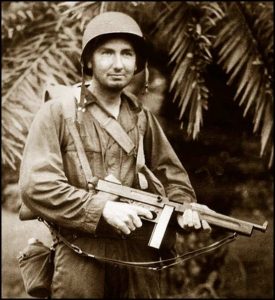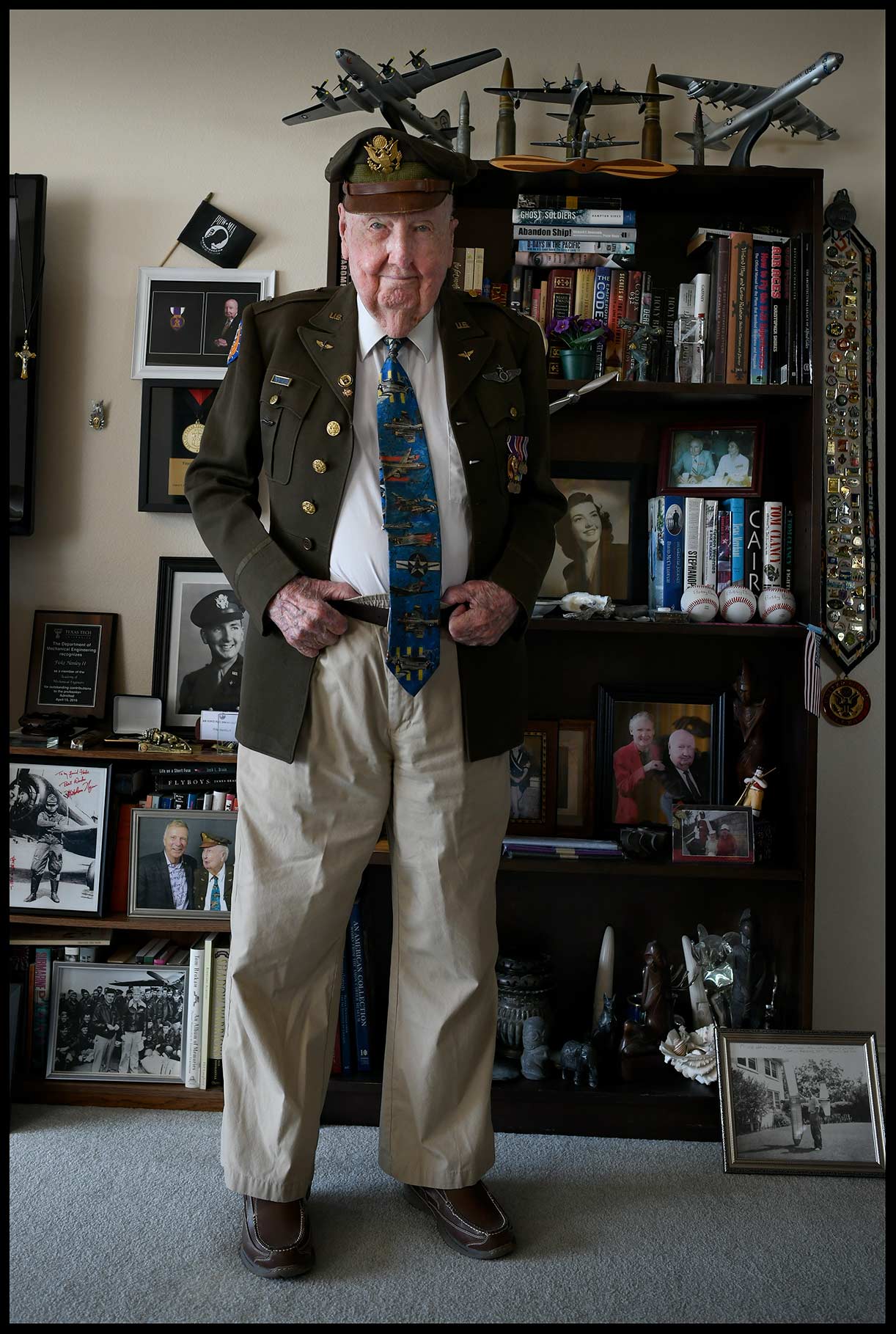Fiske Hanley
Flight engineer B-29
Japanese POW
Fiske Hanley
Second Lieutenant, Army Air Corps
1942–1946

2nd Lt. Fiske Hanley
Boca Raton, FL, 1944
We were in a dungeon in Tokyo waiting to be tried and executed for killing women and children. They poisoned my wounds, starved me, beat me; I lost an ear. They beat that off.
I was born in Brownwood, Texas, and my folks moved up to Wichita Falls when I was a baby. I grew up there until I was 10, and then they moved to San Antonio. I went to school at Texas Tech and was in their first class of aeronautical engineers. There were five of us. In the fall of 1942, I was drafted, but I signed up for an aviation program for engineers and they let me graduate in 1943. I got my commission at Yale. They sent about 20 of us to Boeing as B-29 flight engineers. I met my combat group, the 504th Bombardment Group, in Omaha and wrote a history book on B-29s. It’s used in the Air College at Colorado Springs.
I arrived on Tinian in the Marianas in January, 1945. I flew three of the five incendiary missions in Japan. We bombed Kobe, Osaka, Nagoya and Tokyo. We killed over 100,000 people on each one of them—more than either atomic bomb. I got shot down on my 7th mission. Only two of us made it out. We were right over the battleship Yamato.
I was an engineer, and they interrogated me because they thought I knew more. We were in a dungeon in Tokyo waiting to be tried and executed for killing women and children. They poisoned my wounds, starved me, beat me; I lost an ear. They beat that off. The VA gave me a new ear. After the Emperor spoke on August 14th, the Commander of the Kempeitai issued the order to “Kill them all”. There were about 30 of us. They took us to Ōmori .
I counted 14 times that I missed certain death. A firing squad had a fresh dug pit, and bullets in the barrel. They didn’t shoot me. Why? A minister told me my job was to live and tell the story of what man can do to men. My worst day was each of those 14 times that I was supposed to die. We were the first camp liberated in Japan. My best day was August 29, 1945 when the Marines came in to get us. Seeing that flag flying was awesome.
MacArthur said no prisoners could be liberated until he signed the peace agreement on September 2nd. However, Admiral Halsey was out in the bay and said, “Bullshit.” They came and got the 700 prisoners from Camp Omori.
They took us out to this hospital ship with white uniformed Navy nurses—a beautiful sight. Once the peace treaty was signed, they put us ashore on Okinawa, and we were in a tent camp there. I got back to the States just before Christmas, 1945. I was discharged in 1946.
When I got home, I couldn’t sleep because of post-traumatic stress. I had my college typewriter, and I typed four or five pages every day on what was to become my book. Some pretty stewardesses down the street would go over my typing and correct it. Before long, that whole book was written. I put the pages in a big pile and pulled it out in 1997, and that’s when the book was completed–Accused American War Criminal.
When I got out, I went to Convair. They hired me as a draftsman. A big auto dealer gave me the first Ford convertible off his line. That’s how I met the stewardesses. I got married in 1947 to one of the prettiest stewardesses, Betty Baker, from Tulsa. We were married 43 years and had three children.
I was a B-36 flight engineer instructor for three years. I flew all kinds of training and testing missions. I knew Chuck Yeager and all the top flight guys at Edwards Air Force Base. I became the Chief Flight Engineer. Then I went into advanced design with Harry Hillaker who designed the F-16. I helped design it and became Head of Weapons. {08-02-2018 • Ft. Worth, TX}
